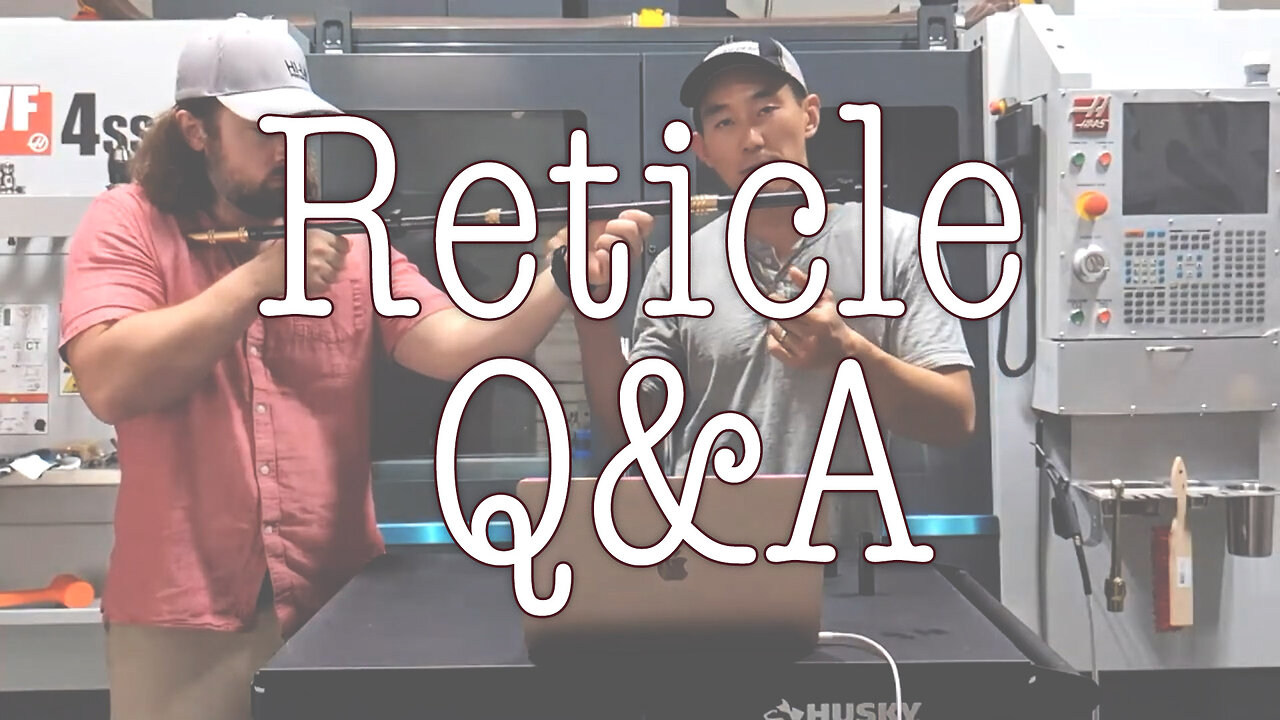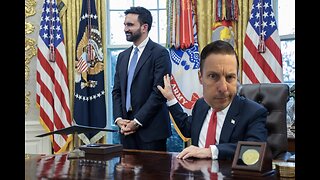Premium Only Content

Q&A - Oct 1st - Laser Boresighters, Bullet Trace, Reticle Swapping, and more!
Back again with another Q&A! This is becoming a habit or something...
00:00 Intro
00:18 Lasers
“I use a lazer bullet. Pull the trigger dot lights up on target. Adjust go to range. Also great for dry fire practice”
I personally don't use a laser boresighter. It's an extra thing that needs batteries, and I'm not a fan of that at the range. They can be useful in the right situations, though.
A laser boresighter comes with a few pros and cons (as with anything);
Pros:
- May save ammo when getting scope initially zeroed
- Smaller than most other sighting equipment
- Can be used for some dry fire practice
Cons:
- Requires batteries
- May not be aligned to bore, thus defeating its own purpose
- Limited functional distance
Whenever possible, I like to boresight the manual way: remove the bolt, look down the bore. For some rifles (such as a lever action), this isn't possible. I then try a different method: get the paper really darn close for the first shot. This will tell me if I'm way off or generally in the ballpark. I'll make some coarse adjustments, then push the paper out to a better distance to fine tune the zero.
05:15 Trace
“Can you see bullet tracer with 6x binoculars? What is the best magnification for seeing bullet trace?”
Bullet trace is a function of speed and atmospheric conditions. A bullet going really fast (and still really hot from the burnt powder) will distort air as it travels. 'Trace' ends up being a line of distortion trailing after the bullet. The easiest way to see this is to keep yourself in line with the rifle, looking at the target.
This is something you can even see with the naked eye, though magnification does make it easier. The tighter you can get your view on the area the bullet will be traveling through, the easier trace will be to see. Bigger bullets, hotter loads, faster bullets, and certain atmospheric conditions also help with visibility.
At the end of the day - 6X is fine. So's 20X, 30X, or anything at all that gets you looking at the right area with enough detail.
07:56 Reticles
3 Questions in One!
- How to swap out a reticle
- Reticle swap dangers
- New reticles for the Malcolm scopes
A reticle is a delicate thing. The reticles in the new Malcolm Long Scope are about 0.001" thick, which is only 1/4 the thickness of printer paper.
The most important thing to remember when swapping out a reticle: don't touch the reticle. Not with your hand, not with a tool, not with random sticks and pebbles at the range. That will be the best way to keep it safe and unbent.
To swap out the reticle in one of our Malcolm scopes (8X, 20X, 6X long):
1. Remove eyepiece
2. Remove eyepiece lock ring
3. Remove reticle locking screws (they're really small)
4. Remove reticle locking frame (it'll slide off when the screws are removed)
5. Slide out reticle frame
Step 5 is the one where you have to be careful. The reticle frame should be slid out carefully, and should not touch anything. Tilt the scope a slight amount, give it a good wiggle, and the frame should peek out.
Hi-Lux On Social Media:
► Like on Facebook: https://www.facebook.com/LeatherwoodHiLuxOptics
► Follow on Instagram: https://www.instagram.com/leatherwoodoptics
► Subscribe on Youtube: https://www.youtube.com/c/hiluxinc
-
 12:38
12:38
Timcast
22 hours agoJasmine Crocket HUMILIATED By CNN To HER FACE Over Epstein LIE | Tim Pool
76.1K64 -
 19:32
19:32
MetatronHistory
19 hours agoWas Nazism Left Wing or Right Wing? An Answer From History
4.21K21 -
 LIVE
LIVE
a12cat34dog
3 hours agoI'M FINALLY BACK :: Resident Evil 4 (2023) :: FINISHING MAIN GAME & DLC {18+}
214 watching -
 31:23
31:23
Stephen Gardner
2 hours agoFINALLY! Charlie Kirk MISSING DETAILS released!
10K88 -
 5:26:11
5:26:11
cosmicvandenim
7 hours agoCOSMIC VAN DENIM | SEX APPEAL & HORROR
5.02K9 -
 LIVE
LIVE
DoldrumDan
3 hours agoFINISHING SEKIRO - DEPTH 5 TOP RANKED - DAY 50 NEW LIFE
37 watching -
 23:40
23:40
MYLUNCHBREAK CHANNEL PAGE
1 day agoWe Want the Blueprints
54K15 -
 LIVE
LIVE
PenguinSteve
4 hours agoLIVE! Penguin to the Battlefield (6)
61 watching -
 1:08:20
1:08:20
The Quartering
5 hours agoMTG Quits, Indian X Meltdown & FBI Caught Lying Again About Trump Assassin
131K71 -
 1:01:33
1:01:33
Jeff Ahern
5 hours ago $10.15 earnedThe Saturday Show with Jeff Ahern
43.1K23